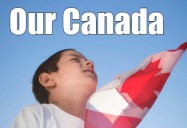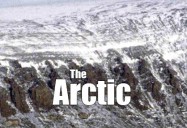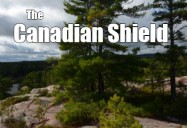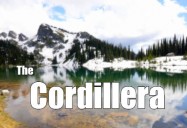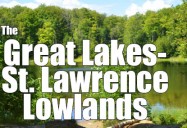
- School District 5 - Our Canada Series
School District 5 - Our Canada Series
Our Canada - The Interior Plains
Width Height
Subject(s): Canadian Social Studies, First Nations Studies, Science, Social Studies
Grade Level: 3 - 5, 6 - 8, 9 - 12
The Plains region of Canada is an area of a variety of interesting landforms. Sometimes called "Canada's breadbasket" it is known as one of the richest grain-producing regions in the world supplying us with a lot of our food. Formed over milllions of years, the area started as a region of land below an ancient sea. Today one can find fossils and dinosaur bones in certain areas. The First Peoples of the Plains arrived over 10,000 years ago and were nomadic hunters who followed the great herds of bison.
Includes PDF Resource Guide.
|
Running Time: 14:23 Country of Origin: Canada Captions: |
Producer: McIntyre Media Inc. Copyright Date: 2016 Language: English |
Video Chapters
-
The Interior Plains 1:21
The Plains region of Canada is an area of a variety of... -
Regions of the Interior Plains 4:03
The Plains region of Canada is an area of a variety of... -
Climate in the Interior Plains 2:05
Far from the influence of the ocean, the Interior Plains have... -
Water Sources in the Interior Plains 00:31
Many large cities in the Interior Plains can be found located... -
Indigenous Peoples in the Interior Plains 1:02
In the past, water routes in the Interior Plains were important... -
First Nations and European Settlers in the Plains 00:53
The first European settlers to come to the interior plains would... -
Industry in the Interior Plains 1:23
Agriculture is a major industry in the plains, with Saskatchewan... -
The Negative Impact of Industry on First Nations People in the Plains 00:29
Many First Nations people have been negatively impacted by oil...
TRANSCRIPT
Close- Have you ever used a map to find your way to a new place? Have you searched on Google Earth to see what the place looks like or looked out an airplane window to see the earth below? That's all part of geography. Geography is the study of the Earth's surface.
- Canada has six different geographic regions. We have Arctic tundra, fertile lowlands, rolling plains, majestic mountains, and vast forests. Each region has a wide variety of vegetation, natural resources, industries, and history.
- The climate in each region is unique. You may live in a region where days are warm in the summer and snowy in the winter, or a place where there is a lot of rain, or maybe even a place where there's permafrost. Do you know which region you live in?
- Today, let's take a look at the Interior Plains. The Interior Plains region lies between the western mountains in the Cordillera region and the Great Canadian Shield. It is found in parts of the Yukon, Northwest Territories, British Columbia, Alberta, Saskatchewan, and Manitoba. The largest cities in this area are Calgary and Edmonton in Alberta, Saskatoon and Regina in Saskatchewan, and Winnipeg in Manitoba.
- When people think of the plains, they may think of flat land stretching as far as one can see. Actually, the Interior Plains has a variety of land forms. There are vast areas of flat grasslands, which are also called prairies. There are lowlands with gently rolling hills. And you can also find areas with deep, wide valleys, foothills, lakes and rivers, and wetlands.
- Most of the vegetation in this region is farmland. The further north you go, the less vegetation you see. Why do you think that is?
- The plains of Alberta, Saskatchewan and Manitoba are among the richest grain-producing regions in the world. In fact, this area is sometimes called Canada's breadbasket. This area supplies us with a lot of our food.
- The Interior Plains were formed over millions of years. It began as a region of land below an ancient sea. As sediments eroded from the Canadian Shield as well as the Rocky Mountains, these sediments were deposited into the ancient sea. Over time, this sea began to dry out. And in the end, this vast land mass was formed.
- The climate, land forms, and vegetation are very different here from north to south and from east to west. In the most eastern part of this region, the Manitoba Plain is low and flat. Over 11,000 years ago, this area was covered by Lake Agassiz, a huge lake that formed as glaciers melted and retreated. As water drained into this ancient lake, it carried sand and soil with it, which sank to the bottom. As Lake Agassiz began to evaporate, this rich soil was exposed, and is now home to tall prairie grasses in the south and spruce forests in the north.
- The next area to the west, just a little higher above sea level, is the prairie grasslands area. This is an area of rolling hills, rugged coulees, and ravines. This area was once covered entirely with grasses. Much of it has been plowed under, making way for farming. This region gets the most sunshine in Canada, making it a good place to grow crops and raise cattle. However, farming has led to a lot of habitat loss for animals that called the grasslands home.
- At the western edge of the Interior Plains are also the foothills. These are low hills at the base of the mountain systems in the western Cordillera. North of the grasslands area is an area called the parklands. The climate is cooler and wetter here. And even further north, you find the boreal forest where the trees are mostly coniferous, trees like spruce and balsam fir that have green needles year-round.
- And finally, at the very northern edge of the region, you find treeless tundra. The ground here is permanently frozen. This is called permafrost. Here, you find low-growing shrubs, mosses, and lichens.
- And there are some cool surprises in this region. At the Great Sand Hills ecological reserve in Saskatchewan, you can see the largest area of active sand dunes in Canada. Due to the very strong winds, the sand dunes are always moving, creating an ever-changing landscape.
- In an area of Alberta called the Badlands, water, frost, and wind have created strange shapes in the sandstone called hoodoos. According to First Nation legends, hoodoos are important spiritual symbols. Some believed they protected the path of the buffalo. Others believed they were petrified giants who came alive at night.
- The same forces of erosion have also uncovered something really spectacular. Did you know that millions of years ago, dinosaurs roamed the Interior Plains? Thousands of dinosaur fossils have been found in Drumheller Valley in Alberta.
- Temperatures on the Interior Plains can be very different as you travel from place to place. Because this region is far from any influences of the ocean, the land heats up greatly. Summers are usually hot and dry. This region has the most sunshine in Canada, making it a good place to grow crops and plants. In fact, did you know Medicine Hat, Alberta is the sunniest place in Canada?
- Sometimes this heat and dryness can lead to devastating wildfires caused by lightning strikes or human menace and carelessness. These fires can burn thousands and thousands of hectares of land, affecting people and the surrounding ecosystem. This massive fire in May, 2016 raged through Fort McMurray, Alberta, forcing the entire city of 88,000 people to evacuate.
- The winters tend to be cold. However, closer to the Western Rocky Mountains, the winter temperatures can be affected by the Chinook winds. Chinooks are warm breezes moving down the mountain slope. These winds have lost most of their moisture while crossing the cordillera. Chinooks bring warm, dry air to the region.
- Here, too, can be violent weather. Air from the Gulf of Mexico flows north, colliding into air from Canada, creating sudden and violent weather such as tornadoes, blizzards, and hailstorms. However, in the northern parts of the plains, north winds bring cold air south from the Arctic. There are no mountains to protect these areas and this makes the winters very cold and summers short and cool.
- The population here tends to be greater in the southern regions of the plains. You'll also notice that towns and cities are usually beside a water source like a lake or a river. For example, Winnipeg can be found where the Red River meets the Assiniboine River. The plains rely a lot on water since the region's climate is generally dry. Water not only helps irrigate crops and livestock, but it is also a source of transportation for products, supplies, goods and services.
- In the past, these water routes were also important fur trading routes. The First Peoples arrived in the Interior Plains over 10,000 years ago. They were mostly nomadic hunters, meaning they moved from place to place to hunt, following the great herds of bison that roamed over these grasslands until the early 1880s.
- The main nations here include the Blackfoot, Cree, Ojibwa, Assiniboine Nakoda, and Dakota. Their culture was based primarily on the immense herds of bison or buffalo that roamed over and fed on these grasslands. Buffalo hides were used for robes, tent covers, moccasins, and shields.
- Tools and utensils were made of the bison's horns, hooves, hair, tail, bones, and sinew. Buffalo dung was used as a fuel for fires on the treeless plains. They moved from place to place, following the herds, and would erect tepees to live in.
- When European settlers began to arrive 250 years ago, life changed for the aboriginal people. The first Europeans were fur traders and the plains people began to change their way of life as they trade furs for things the newcomers brought from Europe. Later, European settlers came to the plains to farm the lands that had been gained from First Nations people through treaties.
- As the fur trade moved west, many European fur traders married First Nations women. These women were able to translate for their husbands and made it possible for them to survive in this cold, unfamiliar climate. Their children were called Metis, from the French word for "mixed." The Metis nation was strongest in the Red River region of Manitoba.
- There are many types of occupations in the Interior Plains region. Farming is extremely important. Crops such as wheat, barley, oats, flax, canola, mustard, potatoes, and corn are grown in the plains.
- Saskatchewan has 40% of Canada's farmland. Farmers also raise cattle, pigs, and poultry. Both the crops and livestock produced in this area feed many Canadians, as well as others around the world.
- The agricultural industry is also linked to the tourism industry. Many festivals, like the Calgary Stampede, and agricultural shows are held throughout this region for everyone to enjoy. This area has a large mining industry, as well. Resources like oil, natural gas, coal, potash, copper, zinc, gold, and uranium that are found underground in the plains are extracted and refined into other products. For example, we extract or take oil from the ground to provide power for things in our homes and in manufacturing.
- This type of industry provides thousands of jobs for people. Unfortunately, mining can also destroy the environment and have a big impact on people in the area. Take a look at what the oil sands in Alberta did to the surrounding environments.
- This area is also home to many First Nations groups. Many are affected by the oil sands development. They have lost land rights, had serious health issues, and lost hunting and fishing grounds. Some, like the Beaver Lake Cree nation, say that caribou, elk, moose, deer, and fish have become infected with diseases caused by water pollution. Oil spills have threatened their traditional way of life.
- So that is a quick look at the geographic region we call the Interior Plains. It provides a lot of natural resources to Canadians and people in many other countries. It covers a vast region of our country from the Beaufort Sea in the north to our border with the United States in the south, and from Manitoba to the Rocky Mountains. The landscape, climate, and vegetation all vary greatly.
- The Interior Plains is an important part of Canada's landscape, and travelers never forget its beauty. It is also an area we must take care of. We all need to ensure that we and future generations had access to clean air, safe water, fertile soil, and nutritious food to survive and thrive.
- [MUSIC PLAYING]
TRANSCRIPTS:
Interactive Transcript
Transcript (PDF)
